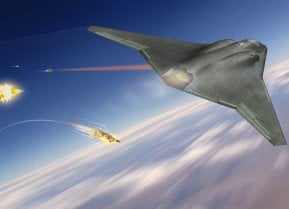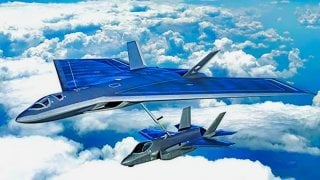NGAS: The 'Stealthy' Refueling Tanks the Air Force Wants to Fight China
The urgency with which the Air Force is approaching the NGAS program relates to the growing assertiveness of China in the Indo-Pacific. Countering China would be difficult with existing technologies.
The U.S. Air Force is in the early stages of developing a stealth tanker, the Next Generation Air Refueling System (NGAS). The NGAS will help inform the development of the Next Generation Air Dominance (NGAD) sixth-generation fighter, and the Collaborative Combat Aircraft (CCA) drone.
A recently broached pause to the NGAD program will likely affect NGAS development as well. The Air Force faces “broader and still growing questions about how…to achieve and maintain air superiority and refuel aircraft in flight, especially in and around highly contested environments in future major conflicts like one in the Pacific against China,” The War Zone reported.
Where does the NGAS stand?
U.S. Air Force Secretary Frank Kendall provided updates recently during a keynote address: “During my tenure, we’ve gone through an evolution in our strategy to recapitalize the tanker fleet. The threat is now reaching out to longer and longer ranges. That puts both tanker and transport aircraft at risk over ever-increasing ranges. This is a particular problem for aerial refueling fighters within their combat radius ranges.”
Kendall is referring to the increased range of anti-air missiles and hypersonic missiles, presumably those in the Chinese arsenal.
The Air Force’s tanker fleet is vulnerable against such munitions. Tankers like the KC-10, KC-46, and KC-135 do not have stealth technology and are easily detectable on enemy radar. Despite not having stealth technology, these tankers have not been vulnerable, for the simple reason that they are kept out of range of enemy missiles. That’s becoming harder to do, inspiring the Air Force to develop a tanker with stealth features. Kendall has called stealth tankers critical to the success of future conflicts. The Air Force is hoping to have “elements of NGAS” enter service by 2040 or sooner, allowing tankers to get closer to the tactical edge of a high-end fight.
“Almost two years ago, we started an Analysis of Alternatives, what we now call NGAS, the Next Generation Air Refueling System,” Kendall said during his address. “We are about to complete that analysis, and we are folding that work into our reconsideration of both the NGAD platform and the next increment of CCAs.”
Kendall continued, stating that the Air Force issued a request for information for input on the NGAS system, which Kendall called the “first step in establishing competitive vendor pools.”
“Our intent is to have simultaneous…answers about the design concepts for NGAS, NGAD, and CCA Increment Two over the next few months,” Kendall said.
The urgency with which the Air Force is approaching the NGAS program relates to the growing assertiveness of China in the Indo-Pacific. Countering China would be difficult with existing technologies.
About the Author: Harrison Kass
Harrison Kass is a defense and national security writer with over 1,000 total pieces on issues involving global affairs. An attorney, pilot, guitarist, and minor pro hockey player, Harrison joined the US Air Force as a Pilot Trainee but was medically discharged. Harrison holds a BA from Lake Forest College, a JD from the University of Oregon, and an MA from New York University. Harrison listens to Dokken.


